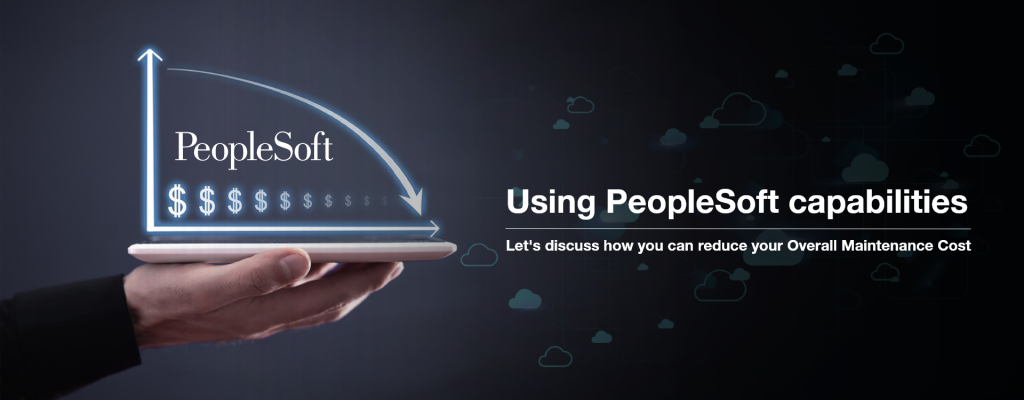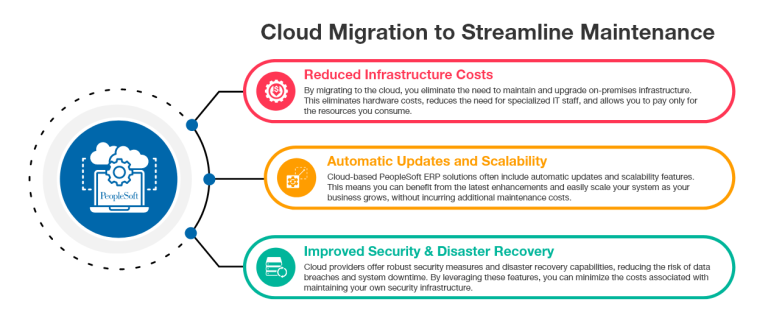

Posted On May 31 2024 | 15:44
If you’re in the world of enterprise resource planning (ERP), you’ve likely heard of PeopleSoft. With its robust suite of applications, PeopleSoft ERP has become a go-to solution for organizations looking to streamline their operations and drive efficiency. But while PeopleSoft offers numerous benefits, one area that often poses a challenge is maintenance costs.
In this article, we’ll explore the power of PeopleSoft ERP and provide strategies to help you slash your maintenance costs. By leveraging the expertise of People Tech Group in resource planning and management, adopting best practices, and considering cloud migration, you can optimize your PeopleSoft ERP investment and achieve significant cost reduction.
- Streamlined Processes: PeopleSoft ERP integrates various business functions and provides a centralized platform for data management. This integration eliminates manual processes, reduces errors, and improves overall efficiency.
- Enhanced Decision-Making: With real-time access to accurate and up-to-date information, PeopleSoft ERP empowers decision-makers to make informed choices. By leveraging analytics and reporting capabilities, organizations can gain valuable insights and drive strategic decision-making.
- Improved Collaboration: PeopleSoft ERP enables seamless collaboration across departments and teams. With shared access to data and resources, employees can work together more effectively, fostering a culture of teamwork and innovation.
- Upgrades and Updates: As Oracle releases new versions and updates for PeopleSoft ERP, organizations need to stay up to date to benefit from the latest features and security enhancements. However, upgrading can be time-consuming, costly, and disruptive to business operations.
- Customizations: Many organizations customize their PeopleSoft ERP implementation to meet their specific business requirements. While customization can provide a competitive advantage, it can also increase maintenance costs, as each customization needs to be tested, maintained, and upgraded during the software lifecycle.
- Limited Resources: Organizations often struggle with limited resources dedicated to PeopleSoft ERP maintenance. This can lead to delays in applying patches and updates, resulting in increased security risks and potential system vulnerabilities.
According to Gartner’s research, more than half of CFOs (53%) anticipate that within the next four years, around 50% of their enterprise applications and transactions will be delivered through SaaS cloud computing.
This transition to the cloud offers numerous advantages, including scalability and the flexibility to pay only for what is used, all while maintaining the functionality of the application. Migrating from PeopleSoft to Azure, when done correctly, can bring about benefits such as shorter cycle times, improved performance, and the ability to make data-driven decisions.
PeopleSoft’s Cloud Architecture enables companies to achieve a solution through rapid deployment and automated management of the PeopleSoft environment. This is made possible by fully virtualized infrastructure and platforms, automated configuration of PeopleSoft instances, automated change management, automated provisioning of PeopleSoft instances, and automated cloning of PeopleSoft instances.

PeopleSoft ERP offers a powerful solution for organizations seeking to streamline their operations and drive efficiency. While maintenance costs can pose challenges, implementing the strategies outlined in this article can help you slash those costs significantly. By regularly assessing upgrades, streamlining customizations, leveraging resource planning and management, adopting best practices, and considering cloud migration, you can unlock the full potential of PeopleSoft ERP and achieve substantial cost reduction. So, take advantage of the power of PeopleSoft ERP and start slashing your maintenance costs today.
Unlock the power of PeopleSoft ERP and achieve significant cost reduction. Contact us now to learn how you can optimize your maintenance processes and streamline your operations by utilizing cloud migration approach.
